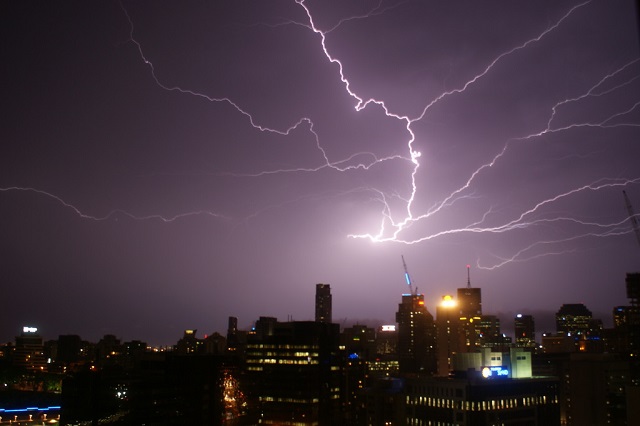
This piece is drawn from Agenda for Change 2016: strategic choices for the next government.
Natural and technical disasters are a major strategic security challenge. Deloitte Access Economics’ Building resilient infrastructure report estimates that in 2015 the total economic cost of natural disasters in Australia exceeded $9 billion. That figure is expected to rise to an average yearly cost of $33 billion by 2050 due to population growth, increased infrastructure density and migration to vulnerable regions.
Climate projections released by in 2015, for all future emissions scenarios indicate that Australia will experience more extreme heat, more extreme rainfall and fewer tropical cyclones with a higher proportion of high-intensity storms. The Insurance Council of Australia suggests that climate change scenarios predict a progressive increase in the frequency and intensity of natural disasters over the coming next 100 years.
The CSIRO and the Bureau of Meteorology projections also suggest increased extreme fire-related weather in southern and eastern Australia, longer and more severe droughts in southern Australia, rising sea-levels with an increased frequency of storm surge events, and warmer, more acidic oceans around the country.
So what can the government do in the face of such complexity? Here are two simple options:
The first is to invest in disaster mitigation. The 2030 Sendai Agenda for Sustainable Development Framework emphasises the criticality of investing in disaster risk reduction and recommended public and private sector institutions invest in disaster risk prevention and reduction.
The Northern Australia Insurance Premiums Taskforce recently released its report on the feasibility of options to lower insurance premiums in areas likely subject to cyclone damage. The taskforce found that mitigating the likelihood of damage is the only sustainable way of lowering insurance premiums in cyclone-prone regions of northern Australia, as well as saving lives and reducing property damage.
Recognising and rewarding homeowners who make their homes more resilient is an example of what can be achieved if industry and communities work together to mitigate the effects of natural hazards.
The second option is to join risk-based thinking with assessing the consequences of future disasters to develop policy proposals for the coming decades.
However, there’s often tension between imagination and realism in future scenarios. An example of that played out in Louisiana in July 2004. Federal, state and local emergency planners and responders from across Louisiana participated in a planning exercise, the source of disruption a hurricane named ‘Pam’.
The exercise assumed the ‘hurricane’ delivered up to 20 inches of rain across parts of southeast Louisiana, with sustained wind speeds of 120mph and storm surges producing floodwaters that topped levees and flooded New Orleans. It also assumed many people wouldn’t evacuate the city; that significant building damage and destruction would occur; that communication systems would be almost completely lost; that phone and sewerage systems and potable water supplies would be damaged; and that chemical plants would be flooded.
Planners and other authorities questioned the validity of the content, suggesting that the severity was too extreme and the probability of a hurricane of that size was only 3%. As a result, recommendations related to the gaps in capability and preparedness activities (as mitigation efforts) weren’t followed or implemented.
But one year later, New Orleans was decimated by Hurricane Katrina with severity close to that used in the scenario, and with many of the projected impacts to the city’s infrastructure and people as listed in the planning exercise.
As a result of Hurricane Katrina, and partly because of the consequences of discounting the future-based scenario, the US Federal Emergency Management Administration now plans for ‘maximum of maximums’ events. A key lesson was that disaster management arrangements worked well for ‘average’ disasters, but failed catastrophically for anything beyond that.
Planning should include practices that emphasise the need to identify the severity and consequences of events rather than just their likelihood. That would enhance disaster and risk mitigation planning and should be considered as a standard capability in Australian disaster management agencies.
So where to next? Australia’s better equipped than most countries, particularly in the Asia–Pacific, to meet the challenges of climate change. We’re fortunate to have a high per capita income, low population densities, plentiful natural resources and advanced scientific and technological knowledge.
That doesn’t mean Australia can be complacent, and a number of strategies need to be considered if Australia is going to deal with the natural and human-caused shocks that are inevitable.
While only two options are mentioned here, they’re important ones: we must harness imagination to enhance planning. Thinking about possible futures and the response capabilities that might be required must be a standard part of national disaster planning. The government should reduce the likelihood of future damage by investing in incremental disaster risk reduction.

